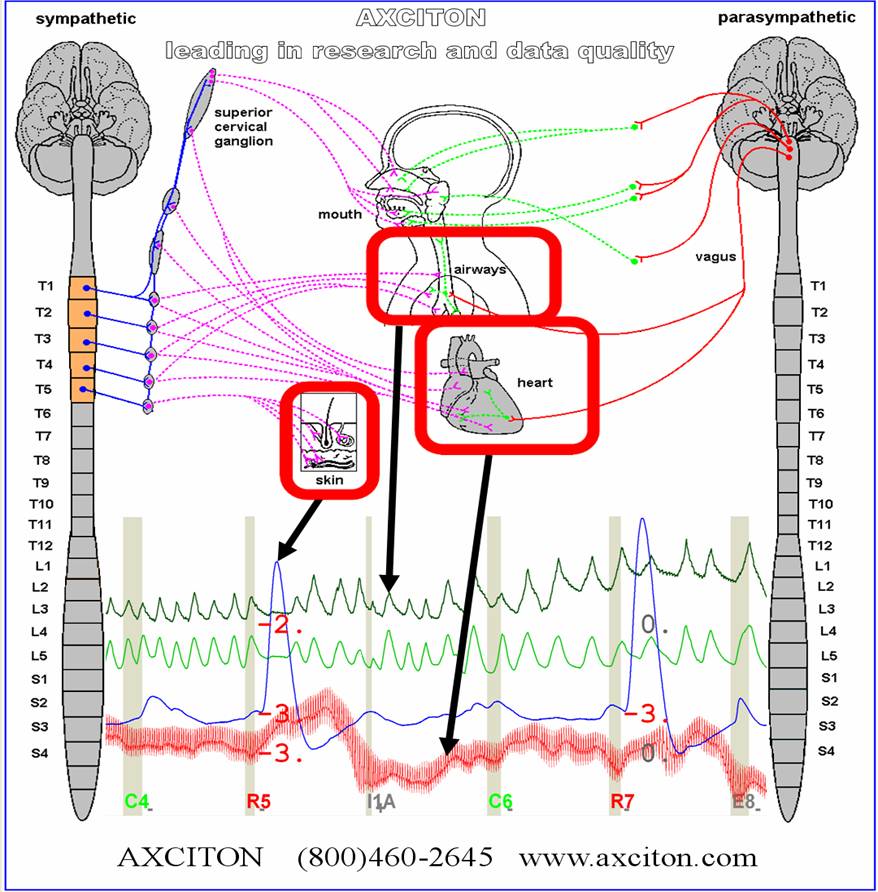http://videos.howstuffworks.com/discovery/30933-how-detecting-lies-works-video.htm
Testing Procedure
The testing process can be divided into three parts. The first being what we call the pre test interview , this is the time the facts of the case are explored and the questions to be included in the test are formulated. Once everyone is satisfied with the questions the person taking the test signs a statutory declaration giving the examiner written permission to conduct the test, this also doubles as a confidentiality agreement which nominates who can receive the test results.
The second phase is the data collection or the testing phase were the subject is tested on the previously agreed to questions. This is when the person who has agreed to be tested is connected to the Polygraph via the physiological sensors which feed the information into the data acquisition system then into the computerised polygraph screen and produces the chart data the examiner will use to numerically score to derive the result.
The third stage is the results stage this is when the examiner will work out the results based on the chart data and use of a numerical scoring system and a computerised algorithm specifically designed to offer conclusions based on polygraph data and charts. Once the evaluations are completed the result, is then first presented to person who has taken the test, and second, any other interested party agreed to via the Stat Dec at the pre test stage.
Theory and Practice
Polygraphy or psychophysiological detection of deception is based upon a scientific theory that can be tested with the methods of science. Any conscious effort at deception by a rational individual causes involuntary and uncontrollable physiological responses which include measurable reactions in blood pressure, peripheral pulse-amplitude, breathing and electrodermal response. The most commonly used techniques for the psychophysiological detection of deception are control/comparison question tests. The control question test (CQT) assesses a person’s credibility by looking for a differential reaction between two questions: the relevant and comparison questions. It has been shown that a person will develop a "psychological set" and direct their attention to the question that posses the greatest anxiety, concern or threat to his/her well being.
In 1961 Davis presented three hypotheses to explain the effectiveness of the polygraph technique. One of these concepts related to fear of consequences. When a subject recognises that he or she faces negative consequences for their actions i.e. imprisonment, financial or personal loss or embarrassment if a deception is discovered, he or she becomes fearful of that outcome. This emotional reaction activates the Autonomic Nervous System (ANS) and such changes are monitored and subsequently recorded.
Comparative Investigative Techniques
In a study by Drs. Horvath & Widacki
The study was conducted which compared the polygraph with handwriting analysis, eyewitness identification and fingerprints. A group of 80 students was divided into 20 groups of four persons. A mock crime was then committed by one student in each group and the aforementioned investigative means were employed by experts in each field (in the case of the eye witnesses, they had been told they would be eyewitnesses to a crime prior to the experiment) to try to correctly identify the offender in each group. The results were as follows:
| Identification | Correct | Incorrect | Inconclusive. |
Polygraph | 18 | 1 | 1 |
Handwriting | 17 | 1 | 2 |
Eyewitness | 7 | 4 | 9 |
Fingerprints | 4 | 0 | 16 |
These figures clearly demonstrate the effectiveness of the polygraph compared to other commonly used methods.
The illustration below shows what parts of a Subjects anatomy is measured by the polygraph.
